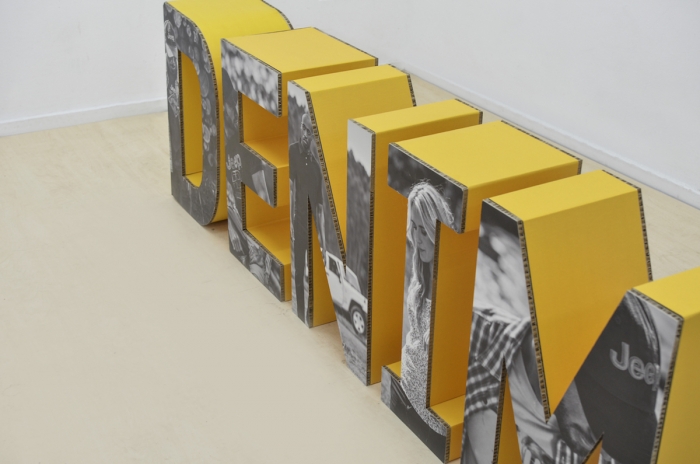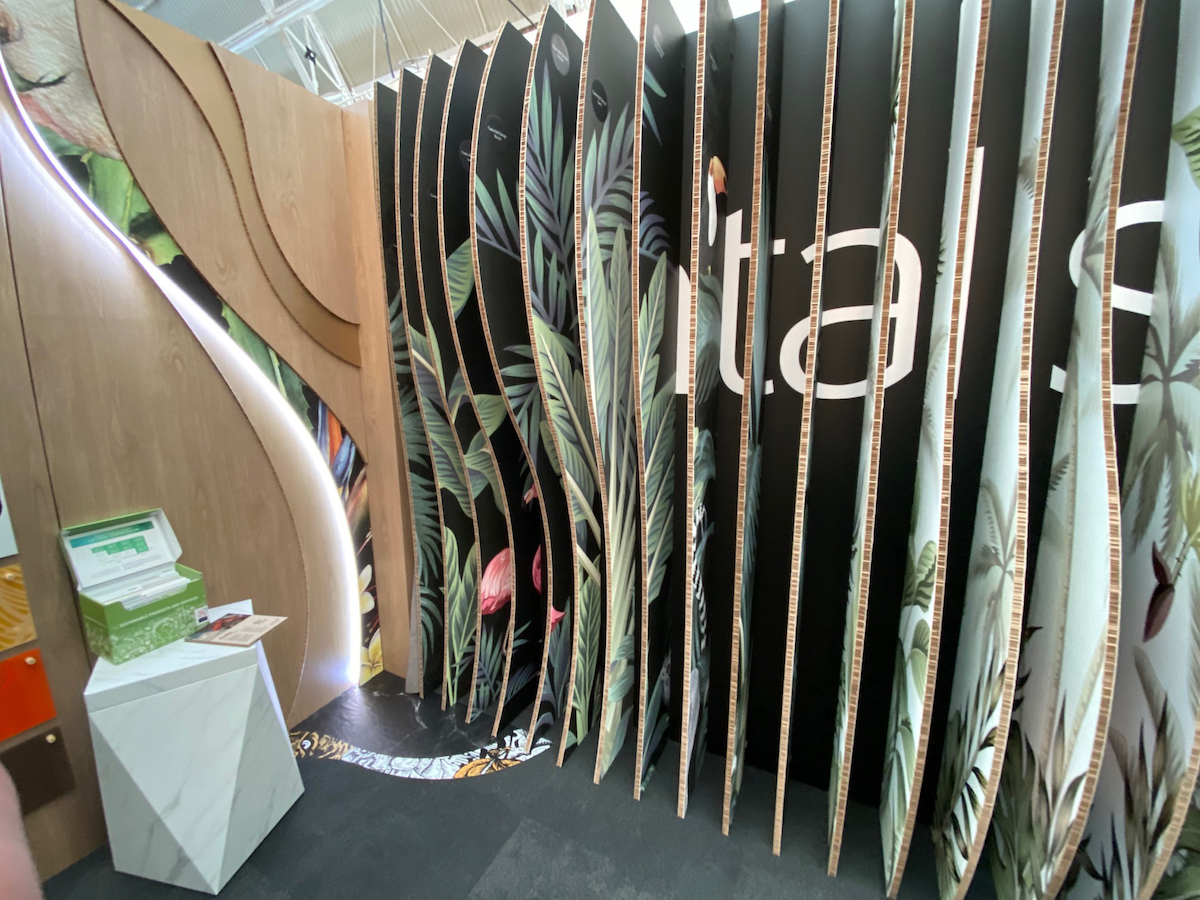If it’s good enough for the TV and film industry, it’s good enough for many other sectors, so should you be looking a bit more seriously at 3D, cardboard engineered print applications?
This sector has had the capability to produce fabulous printed 3D work for years, but it’s gone largely unnoticed beyond retail and exhibition displays. Shame, there’s oodles of potential. Now that’s getting recognised in the wider design community, its eco credentials being a key driver. The well-publicised and much applauded carboard TV/film sets created earlier this year for the Vectar Project - which is challenging the TV/film industry to become more environmentally conscientious by switching to more sustainable cardboard sets - will help spread the word. What’s being espoused as good for the planet, could also be good for you, so does it make sense for you to get more involved?
Sustainable printing exponent Imageco has. You may have seen some of its nifty work for the Antalis stand at this year’s Surface Design Show, and it’s working with the media supplier again for the VM and Display Show - all in an attempt to raise the eco-friendly profile of 3D cardboard structures and grow demand for what could be a highly lucrative as well as worthy development.
Imageco, which has been producing cardboard engineered applications for some time, has recently seen a huge jump in such work, and believes it will become a linchpin in terms of the company’s own sustainability.
“It is now a massive part of our business and forms part of our plans for the future,” says co-owner and MD Nathan Swinson-Bullough. He points out why: “December 2021 and Feb 2022 saw cardboard related POS account for almost 50% of our turnover. We expect, overall, that in 2022 it will account for 40% of our work in all sectors. If we look back to 2018 / 2019 when things were normal it was less than 10%, so a significant shift has happened.
“We are actively working on designs from card and Xanita that can be applied to areas of retail, events, exhibitions, and others. Our cardboard engineer is flat out day in, day out, on various designs. In fact, a big part of our 2021 R&D tax claim was based on the trials of cardboard engineering.”
Swinson-Bullough explains the turnabout that he’s witnessed, saying: “We have been printing on to card for as long as I remember, but for basic stuff - simple displays and POS with generic downloaded cutters. For many years we just created things off the top of our head and fumbled our way through making things.
“But three or four years ago the guys at Antalis introduced us to Xanita board, which opened-up new possibilities. We soon put the material to use, replacing rigid foam PVC with its introduction. The team at Xanita had its own design team and offered us support on 3D design which was great. The uptake on the material was so good that we were made gold partners for Xanita.”
He continues: “Cardboard engineering really excited me and for some time was on my radar in terms of something I’d like to develop, but as with anything, you need the right people to make things happen. In late 2021 a fortuitous thing happened - an introduction to Tim Houghton and Dean Sharpe. Tim was a seasoned account handler of all things POS and dealt with large volume rollouts and Dean was an incredible design engineer. We offered them both a role at Imageco and since then the work has escalated and we are producing high volume POS runs for retail and pushing the exhibition route with Xanita.
“Following the success of Antalis’s stand at the recent Surface design show in London we are seeing a surge in enquiries for carboard-based solutions and are currently working on several events and roll-outs.”
The ‘eco sustainability’ factor is proving key to this surge in demand. “There are so many benefits to working with paper-based products, and we can now engineer products that are durable and 100% card-based,” says Swinson-Bullough.
“Xanita for example is 100% recycled fibre board that is also 100% recycled, it has 70% the strength of MDF yet is a fraction of the weight. It ticks environmental boxes in terms of recyclability to CO2 emissions to transportation etc. Not only can we engineer 3D applications in a way that doesn’t need adhesives or tape, the manufacturing time and processes are also reduced using cardboard engineering. From our perspective, our Zund is equipped with multi tooling, so the construction of the products is simple yet very robust.”
Imageco has recognised that it needs take on an educator role to get clients - and potential ones - to understand these ‘green’ benefits.
“Our clients are becoming more sustainable and as a critical part of the supply chain the more sustainable applications we can offer be the better this reflects on their own sustainability values.
“By actually showing our clients the possibilities of cardboard-based 3D projects it opens their mind to what can be achieved. I must admit, until Dean began work with us I didn’t realise just how far we could push the limits. What he produces is incredible. We joke that his brain sees the world in cardboard.
“Education about products is something we have always pushed with our clients. We can see the possibilities and have created a lovely showroom of products and past work. It’s good to get our clients in so that they can see the benefits themselves.
“We also have a very active marketing team. If I plant a seed they grow it and make sure our audience is aware of what we are doing. We work with creative agencies so by demonstrating new and innovative processes it gets their brain ticking,” says Swinson-Bullough, adding: “It is easy being a visual company to get the message across. Working in the sectors we work in makes it an easier sell.”
Imageco is now working on 3D projects from short-run bespoke packaging to events and national POS rollouts. And of course it is helping spread the word by partnering with Antalis at various events where the creative industries meet.
“We are lucky that we pretty much have the all the kit we need at our disposal now. The print capabilities and cutting potential have always been there. W have invested in some new tools for our Zund to speed up processes and have upgraded the software but nothing major has changed in targeting this 3D carboard engineered print offering. The two big investments were in the recruiting of industry experts in Tim and Dean - their combined knowledge has been a game changer for us.
“The print landscape changed during Covid and some of our work never returned so I am happy with the decisions we have made about focussing on what is a sustainable print offering. We are already seeing a decent ROI. Long may it continue.”
A wander down Sustainability Street
Antalis is showing-off its range of eco-friendly visual communications substrates in a ‘Sustainable Street’ setting at the VM and Display Show at London’s Business Design Centre (5-6 April). Every element of the Antalis stand - from the structural to the decorative - will be made using substrates for use in retail store design, instore displays and POS.
“We are positive that the Antalis stand will both inspire and excite visitors to the possibilities of a more sustainable future for visual merchandising and display,” says Claire White, specification consultant at Antalis.
The company has been rapidly growing its range of printable display substrates that form part of its Green Star System, a framework that considers how each material is produced and how easily it can be recycled at end of life to meet the growing demand from the retail sector and other industries.
Its ‘Sustainable Street’ is being entirely constructed using Xanita board, an engineered closed cell fibreboard manufactured from material recovered from recycled, used cardboard boxes. It is an environmentally friendly alternative to MDF and other non-sustainable materials and is suitable for a wide range of applications, including POS, 2D and 3D displays, and internal furniture.



